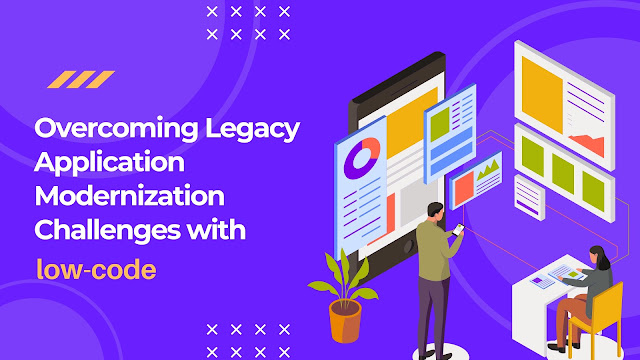Developing Apps Faster with a Low-Code Platform Outsystems
Low-Code is a modern approach to software development that enables faster delivery of applications through minimal hand-coding. It's an alternative approach to traditional software development that is visual.
The graphical user interface and the drag-and-drop features of a low-code platform eliminate dependencies on traditional computer programming. Low-code platforms democratize app development, particularly for the “citizen” developers.
Here are some advantages of low-code.
Advantages of low-code development platform
Higher productivity: Low-code platforms allow you to build more applications in less time.
Reduced time: As you don’t have to write a large number of codes and have many capabilities to automate processes, you can build apps within days or maybe hours.
Reduced cost: You can also reduce the costs that you used to spend on hiring more developers and using multiple other tools for development.
Business swiftness: These platforms allow you to create smooth apps that can work across multiple platforms and devices.
No Limits: Users can approach data and use it expertly, no matter where they are and what time it is.
Secure: Low-code platforms can help you meet best practices and comply with them to remain risk-proof.
OutSystems — An Overview
OutSystems is a low-code development platform that is designed to speed up the development of most critical apps. It assists in delivering unparalleled efficiency and flexibility.
This Rapid Application Development Platform (RADP) provides all the needed tools to developers to build, deploy, and manage custom enterprise apps with ease. It is an exceptionally fast, visual, and model-driven development platform. From front-end and back-end to process automation, integration, and data modeling, it provides everything you need to create complex enterprise-grade applications visually.
The platform offers a fully integrated approach to development, quality assurance, deployment, and management—the entire application lifecycle—which enables it to support high-scale app development.
Features of OutSystems
Real-time monitoring and reporting of all apps usage and performance
Completely scalable through APIs
Data management
Quick mobile app deployment and monitoring
Support entire app development life cycle
Native support for Agile development
Full support for Batch Processes & Scheduling
Benefits of OutSystems for Your Business
Rapidity: The ability to speed up the delivery of new applications is the best advantage of low-code development. Some of the capabilities which make low code a rapid platform to develop on include; drag-and-drop functionalities, easily implement APIs and connectors and one-click deployment.
Multi-Easy Experience: Low Code enables you to deliver great omnichannel customer experiences, providing frictionless experiences across several touchpoints.
Development for All: Due to its ease of use anyone can work with low code to develop applications.
Automated Governance That Ends Shadow IT: Monitor and control all projects in a central location.
Agility – A Low Code application helps enterprises pivot to new digital initiatives.
Responsiveness: OutSystems offers sufficiently sensitive standard designs for smartphones, tablets, and other mobile devices. You can create responsive Android or iOS mobile apps easily using it.
OutSystems has been crafted to help organizations enhance their digital capabilities and develop enterprise apps quickly. The broad features and tools for collaboration, integration, and database make OutSystems one of the most popular low-code platforms. At OmnePresent, we offer Outsystems development services to develop web and mobile apps for enterprises that help them meet productivity and efficiency goals while expanding capabilities.

Comments
Post a Comment